Table of Contents
Every day, 166 people in the USA die from traumatic brain injury (TBI) according to the Centers for Disease Control (CDC).[i] If you survive TBI, you can experience the effects for a few days. Or for the rest of your life.
TBI can result in impaired cognition and memory, loss of vision or hearing, personality changes and depression. Affecting not only those who suffered TBI but connected families and communities.
While decades of research and clinical studies have searched for pharmaceutical solutions to treat TBI, no prescription medication has been found.
As a result, millions are searching for and successfully using natural nootropic supplements to alleviate the symptoms of brain injury.
And yet, the US Food and Drug Administration put out a warning in 2014 telling consumers to ignore and avoid using dietary supplements for treating symptoms of TBI. The FDA news release claimed there was no scientific evidence to support claims that dietary supplements could in any way help an injured brain.[ii]
Turns out there is some truth in what they claim. Most of the clinical research on dietary supplements and traumatic brain injury have been done with animals. Very few have been conducted with human subjects dealing with TBI.
The thing is some of the nootropic supplements we’ll explore in this post have been used for thousands of years. Not treating TBI specifically. But the track record and user reports speak volumes.
The purpose of this post is to provide you with the latest scientific research on nootropic supplements and traumatic brain injury. You’ll learn how to recognize traumatic brain injury (including concussions).
You’ll see what happens in the human brain that’s injured. And we’ll also consider some nootropic supplements that have been scientifically, clinically shown to alleviate some of the symptoms of TBI.
But a cautionary note to start – traumatic brain injury, and even a concussion is serious. If you whacked your head hard enough that you feel some of the symptoms described in the next section, go immediately to the ER and get checked out for bleeding in your brain.
We’ll wait right here until you get back …
Recognizing Traumatic Brain Injury
Traumatic brain injury (TBI) is caused by a bump, blow or jolt to the head that disrupts normal function of the brain. Severity of traumatic brain injury can range from ‘mild’ TBI (i.e. a brief change in mental status or consciousness) to ‘severe’ TBI (i.e. extended period of unconsciousness or memory loss).
Most TBI’s are mild (mTBI) and commonly called concussions.[iii] One study in the UK found that mild TBI accounts for up to 80% of clinical traumatic brain injuries. But a simple concussion can result in cognitive impairment and white matter damage that may develop and persist for years.[iv]
Other research has shown that a concussion can result in behavioral changes, impairments in memory and attention, headache, and unsteadiness. Two or more concussions often result in severe brain injury (second impact syndrome) with a greater severity in symptoms and longer recovery time.
A study in Italy demonstrated how vulnerable the brain is after a single concussion (mTBI). A second mild concussion within 3 days resulted in profound metabolic abnormalities similar to those seen after a single severe TBI. Affecting acetyl-CoA, gene expression, neurotransmitters, and mitochondrial metabolism.[v]
Left unchecked, this type of brain injury often leads to earlier onset of age-related cognitive decline and dementia. I have conducted Personal Consultations within the last few months where traumatic brain injury led to early-onset Alzheimer’s or Parkinson’s Disease a few months after the head injury.
The American Association of Neurology developed a grading system to help diagnose and treat concussions. Early symptoms (within a few minutes to a few hours) include lack of awareness, dizziness, headaches, nausea and vomiting. Later symptoms (days to weeks) include lower attention and concentration, persistent headaches, irritability, and sleep disturbances.[vi]
The key here is being able to recognize concussion or TBI and prevent a second injury. In sports, this means getting off the field and going into recovery rather than going back into play. It could mean the difference between quicker recovery to full health or a lifetime of cognition problems.
It also means the quicker you recognize the signs of concussion or TBI, you get medical help fast. And then identify which nootropic supplements you may want to try and support your recovery from TBI or concussion.
TBI and Concussion Effects on the Brain
A blow to the head immediately sets off a cascade of events in the brain. Effecting neuron depolarization, the release of excitatory neurotransmitters, ionic shifts, changes in glucose metabolism, altered cerebral blood flow and impaired axon function.[vii]
If this all sounds like Greek to you, stay with me and I’ll do my best to walk you through the neuroscience. As simply and basically as I can. This is important to help you understand specifically what you need to repair in your injured brain. And will help identify specifically which nootropics may help support that repair.
Traumatic brain injury or concussion starts with a disruption in neuron cell membranes and axon stretching. Causing an indiscriminate flux of ions through ion channels that were previously strictly regulated.[viii]
This process causes a widespread release of several different neurotransmitters, particularly the indiscriminate release of glutamate.[ix] Which is toxic when released in excess. Resulting in a further ionic flux.
Neuron mechanisms then work at maximum capacity to restore ionic balance which depletes brain cell energy stores.
As we step through each process in the brain that gets disrupted by traumatic brain injury, we can identify specific nootropics that may be able to target and assist in each of these problems.
Axon Injury
Traumatic brain injury often results in stretching of axons within the brain. Causing ionic flux and depolarization, calcium influx and swelling of mitochondria.[x] And neurofilament compaction (the skeletal structure that supports axons).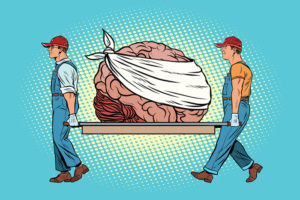
Neurofilament compaction can occur immediately after injury (5 mins. – 6 hours). And from 6 – 24 hours after you get knocked in the head, an influx of calcium can destabilize microtubules which are responsible for ions, proteins, amino acids and neurotransmitter movement into and out of the brain cell.
Axons extend from brain neurons to send messages to other neurons. The damage just described can interrupt this communication, result in axon blebbing (local swelling), and eventually the axon breaking off of the neuron.[xi]
Research has recently found that axon damage can also result from concussion (mTBI).[xii] And the damage can progress over a period of 4 – 6 weeks post-injury.
Axon damage from a concussion results in cognition problems. One study conducted in New York with 17 patients found cognitive impairment due to TBI and axon damage 8 months to 3 years after concussion![xiii]
We’ll look at nootropic supplements shown to support axon health and repair later in this post.
Cerebral Circulation
Studies have found that after TBI, cerebral blood flow decreases (hypoperfusion) the day of the injury. Day 1 – 3 blood flow in the brain increases too much (hyperemia). And days 4 – 15 after TBI, blood vessels constrict (vasospasm).[xiv] Meaning not enough blood flow to support brain cell repair and maintenance.
Cerebral blood flow and blood vessels can all be assisted with nootropics which we’ll explore in a minute.
Glutamate
When the brain is injured, neuron membranes deform. Resulting in excessive potassium release between neurons. This neuron membrane deformity also results in the release of excitatory neurotransmitters like glutamate. Which binds to NMDA and AMPA receptors and related ion channels.
The result is a widespread suppression of neurons and a condition resembling depression. Na+/K+ pumps (sodium and potassium) are activated to restore ionic balance. Because these pumps are ATP-dependent, and require high levels of glucose for metabolism, cellular energy stores are depleted.
This increase in metabolism occurs immediately and can last from 30 minutes to 4 hours after TBI.[xv] At the same time, oxidative metabolism is disrupted due to mitochondrial dysfunction.[xvi] IN turn depleting adenosine triphosphate (ATP) which brain cells use for energy.
Glucose and Mitochondria
Within 30 minutes of a concussion (mTBI), the use of glucose for metabolism rises well above normal levels. Hypometabolism (abnormally low metabolic rate) sets in after 6 hours which can last for up to 5 days.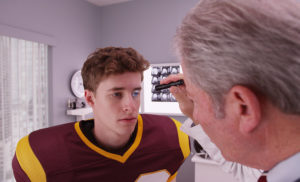
Hyperglycolysis (an increase in glucose utilization) followed by hypometabolism may last for months after moderate or severe TBI.[xvii]
NMDA channels are activated after TBI which result in a significant jump in Ca++ (calcium ions) which accumulate in mitochondria. Causing glucose oxidative dysfunction.
This oxidation is normally handled by antioxidants which prevent free radicals from damaging brain cells. With traumatic brain injury the antioxidants normally present in brain cells are insufficient to prevent brain cell damage or death (apoptosis).
Studies have found that metabolic markers such as the ATP/ADP ratio, NADH/NAD+ ratio, and N-acetylaspartate (NAA) levels all decrease after repeated concussions. Mitochondrial oxidative function is downregulated by as much as 10 days after injury.[xviii]
Animal studies have found that after TBI, the brain experiences a reduction in creatine (Cr), NAA, phosphatidylcholine (PC), and in the ATP/ADP ratio. And these findings were later confirmed in athletes with concussion.[xix] All of which can be helped with nootropics that we’ll explore later in this post.
NMDA Receptors
NMDA channels are associated with long-term potentiation (LTP) which is required for learning and the encoding of long-term memory.
It comes as no surprise that LTP is impaired after traumatic brain injury. Resulting is problems with memory. Problems with LTP manifest within 2 days of injury. And seems to recover within 7 – 15 days after injury. But LTP deficiency has been shown to last up to 8 weeks after TBI.[xx]
Nootropics to support NMDA receptor functionality and long-term potentiation will be explored in the next section of this post.
Nootropic Supplements for TBI or Concussion
Decades of research and clinical studies have shown that traumatic brain injury or concussion results in problems with ion balance, excess neurotransmitter activation, integrity of axons, brain cell energy metabolism and cerebral blood circulation.
This knowledge helps us identify nootropics from our List of Nootropics that can address each problem. And it turns out that several nootropics have been studied extensively specifically for treating the symptoms of traumatic brain injury. Particularly related to sports injuries.
If you’ve spent any time on Nootropics Expert®, it seems that most of the nootropics reviewed here could help repair and maintain an injured brain. So let’s narrow the list to supplements that have shown promise through therapeutic applications for TBI in actual clinical trials.
Creatine
As a nootropic, creatine is one of the most effective cognitive enhancers available. This non-essential amino acid is naturally synthesized in your liver, kidneys and pancreas. And used in your brain to provide a phosphate molecule to adenosine diphosphate (ADP) to produce adenosine triphosphate (ATP). ATP is the primary cellular fuel source created in brain cell mitochondria.
Studies have found that metabolic markers including the ATP/ADP ratio decrease due to traumatic brain injury. Part of the problem may be a drop in creatine from TBI.[xxi]
Maintenance of brain cell ATP levels is critical for the cellular energy required to maintain proper neuron membrane potential, ion gradients underlying brain signaling, intracellular calcium homeostasis, neurotransmission, and intracellular and intercellular signal transduction.[xxii]
A study in Greece worked with 30 children aged 1 – 18 years who suffered from TBI. The children were given 0.4 gr/kg of creatine per day for 6 months. The study found a reduction in post-traumatic amnesia, shorter intensive care stay, and improvements in recovery, communication, locomotion, sociability, personality and behavior and cognitive function.
The Greek study concluded that “administration of creatine may be beneficial to patients with traumatic brain injury”.[xxiii] Recommended dosage of Creatine for cognitive benefit is up to 5 grams per day.
DHA (Omega-3)
Omega-3 fatty acids (DHA & EPA) are important structural components of brain cell membranes. Modulating membrane fluidity, thickness, brain cell signaling and mitochondrial function.[xxiv]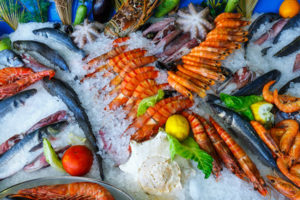
DHA (docosahexaenoic acid) influences the phospholipid content of brain cell membranes increasing phosphatidylserine (PS) and phosphatidylethanolamine production and promoting neuron growth throughout your life.
Many clinical studies with animals have shown the DHA and/or EPA supplementation benefits for traumatic brain injury recovery. DHA has been shown to significantly reduce the number of swollen (blebbing), disconnected and injured axons when taken following traumatic brain injury.[xxv]
DHA is an antioxidant and anti-inflammatory,[xxvi] reduces AMPA-mediated cell death, reduces glutamate-induced toxicity, increases nitric oxide production for cerebral circulation, normalizes brain-derived neurotrophic factor (BDNF) levels, and generally helps restore brain cell homeostasis following TBI.
Despite all the positive animal research showing benefits of Omega-3’s and DHA in recovery from TBI, so far we have no human clinical trials to verify these benefits in humans.
But growing clinical experience by numerous health care professionals show that the brain needs to be saturated with high doses of Omega-3’s in order for the brain to heal after injury. Without sufficient DHA and EPA, healing is less likely to happen.[xxvii]
Green Tea
In 1998, a study was conducted in China including subjects from 12 provinces aged 35 – 60 years. In all, 14,212 people participated in this study to investigate the association between tea consumption and stroke.
The study concluded there was a 40% decreased risk of stroke in those who drank green, black or jasmine teas.[xxviii]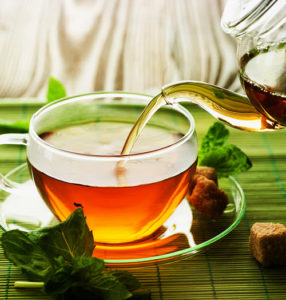
No human clinical trials have been done with green tea and traumatic brain injury. But the cognitive benefits of green tea are so profound, it must be included in this list of nootropics to benefit TBI and concussion.
TBI comes with severe oxidative stress, neuron injury, cerebral blood flow problems and inflammation. Green tea addresses all of these issues.
Green tea’s neuroprotective qualities include the flavonoid epigallocatechin-3-gallate (EGCG), the amino acid L-Theanine and methylxanthines which provide caffeine.
EGCG modulates nitric oxide and oxidative stress.[xxix] Green tea polyphenols potentiate nerve growth factor which is needed to regrow neurons.[xxx] L-Theanine delays neuronal cell death. EGCG is an anti-inflammatory and protects cell signaling pathways.
You can think of green tea as a fertilizer for nerve growth factor and L- Theanine as a silent hero that puts the brakes on neuronal cell death.
And EGCG reduces beta-amyloid mediated cognitive impairment and modulates tau pathology implicated in Alzheimer’s.[xxxi] And are associated with successive concussions or severe TBI.
We do have human studies showing that green tea extract and L-Theanine improves memory and brain theta wave activity which boosts cognitive alertness.[xxxii] A primary benefit in anyone dealing with a concussion.
Some professionals caution about the caffeine content in green tea when it comes to traumatic brain injury. But caffeine-mediated neuroprotection include reductions in neurological deficits, cerebral edema (brain swelling), brain cell apoptosis and protection from inflammation.[xxxiii]
Lithium Orotate
Glutamate toxicity plays a major role in brain damage from traumatic brain injury. Over-activity of glutamate on NMDA receptors causes apoptosis. Lithium inhibits this overactivity.
A study conducted by Dr. Peter Leeds and his team in 2014 states that lithium had “demonstrated robust beneficial effects in experimental models of Traumatic Brain Injury (TBI).
These include decreases in TBI-induced brain lesion, suppression of neuroinflammation, protection against blood-brain barrier disruption, normalization of behavioral deficits, and improvement of learning and memory, among others.”[xxxiv]
Lithium Orotate recommended dose is 5 mg 2 or 3-times per day. Naturopathic doctors suggest stacking Lithium Orotate with 1,000 mg of Omega-3 and 400 IU of Vitamin E (as mixed tocopherols). Excellent advice for anyone. Including those dealing with TBI or concussion.
N-Acetyl L-Cysteine (NAC)
N-Acetyl L-Cysteine (NAC) is a precursor of glutathione which is a potent antioxidant, anti-inflammatory and free radical scavenger. All problems that come with TBI. NAC also reduces irritability, anxiety and depression. Also associated with TBI.
A double-blind, placebo-controlled study was conducted with soldiers at a forward-deployed field hospital in Iraq. The soldiers in this study were dealing with mTBI after being exposed to blasts on the battlefield.
The soldiers were suffering from dizziness, hearing loss, headache, memory loss, sleep disturbances and neurocognitive dysfunction. All symptoms you may recall of concussion or mTBI.
The soldiers who were treated with N-Acetyl L-Cysteine (NAC) reported no symptoms after 7 days of supplementing with NAC. The researchers reported that “This is the first demonstration of an effective short term countermeasure for mTBI”.[xxxv]
Recommended dosage of NAC is 600 mg three-times per day.
Pine Bark Extract
Pycnogenol® is a standardized extract of French maritime pine bark. This extract contains 65 – 75% proanthocyanidins (procyanidins).
Pine Bark Extract is a potent anti-inflammatory and one of the most powerful antioxidants currently known.[xxxvi] Both problems with traumatic brain injury.
Studies have shown that Maritime Pine Bark Extract is 50 – 100 times more potent than Vitamin E in neutralizing free radicals. And it helps recycle and prolong the activity of Vitamins C and E.
Pine Bark Extract helps reduce DNA damage caused by oxidation, inhibits proinflammatory gene expression, prevents glycation, inhibits brain cell membrane damage from free radicals, and reduces oxidative stress. And it can boost cerebral circulation by increasing nitric oxide activity.
I think we pretty much crossed off most of the symptoms associated with traumatic brain injury here. Recommended dosage of Pine Bark Extract is up to 300 mg per day.
Piracetam
Piracetam is a water-soluble ampakine nootropic in the racetam-family of compounds. The very first “nootropic”, Piracetam was developed by the father of nootropics, Dr. Corneliu Giurgea.
Piracetam modulates both AMPA and NMDA receptors. Both receptors as you may recall are negatively affected by brain trauma. It normalizes L-Glutamate and prevents the glutamate toxicity associated with traumatic brain injury.
Piracetam also increases cerebral blood flow. Reversing the symptoms caused by restricted blood flow after TBI.
A study conducted in Russia with 42 patients aged 12 – 18 dealing with severe traumatic brain injury symptoms for the past 1½ – 5 years. 20 patients received 1600 – 2400 mg of Piracetam daily for a month. The other 22 were used as controls.
The study concluded that Piracetam provided positive therapeutic effects on memory, attention, executive function and motor function. As well as speed of cognitive and motor performance.[xxxvii]
Recommended dosage of Piracetam is 1,600 mg 3-times per day for TBI.
Resveratrol
Resveratrol is a polyphenol stilbenoid and phytoalexin that certain plants produce in response to stress, such as injury or fungal infection. It’s a naturally occurring compound found most famously in red wine.
Resveratrol could be one of your best nootropics for controlling the damage done from TBI. Although no human studies have been conducted specifically with TBI victims.
This polyphenol increases brain-derived neurotrophic factor (BDNF) in the brain. BDNF has been called Miracle Gro for promoting repair and growth of new neurons. Resveratrol also increases cerebral blood flow.
Resveratrol as an anti-inflammatory is a potent inhibitor of TNF-α- and IL-1b-induced NF-kB activation. And it suppresses COX-2 by blocking NF-kB activation.
And Resveratrol prevents the release of toxic glutamate during a stroke. Even protecting the brain when administered 6 hours after stroke.[xxxviii] This sounds like a strong therapeutic candidate to be used within the first few hours of concussion to prevent further brain damage.
Pre-clinical studies have explored Resveratrol’s therapeutic effect on experimental TBI. Studies show it reduced neuron loss after TBI in animals. And improved locomotion, anxiety and memory.[xxxix]
Recommended dose of Resveratrol extract (99%) from Japanese Knotweed for brain damage caused by TBI and increasing cerebral blood flow is 250 – 500 mg.
Pramiracetam
Pramiracetam is a fat-soluble nootropic in the racetam-family of compounds. It was first synthesized by Parke-Davis scientists in the late 1970’s. In 1991, Pramiracetam was licensed to Cambridge Neuroscience Inc. And tested for restoring cognitive function after stroke or traumatic brain injury.
Pramiracetam increases nitric oxide activity in your brain. Which acts as a vasodilator which relaxes blood vessels. Improving cerebral blood flow which is a problem after TBI.
This nootropic also has a profound effect on the synthesis of acetylcholine. Which is critical for encoding new memories, concentration, cognition and neuroplasticity.
A study in Russia was conducted with 65 patients suffering from concussion. The researchers gave half the patients Pramiracetam and the other half received Piracetam.
Tests were carried out on the first, tenth and after thirty days. Both groups noted a considerable reduction in headaches, dizziness and nausea. But the Pramiracetam group reported better restoration of orientation, feeling and said it was more effective on amnesia.[xl]
Recommended dosage for Pramiracetam is 250 – 400 mg per day. For TBI you may go up to 1,500 mg per day.
Since this nootropic has a significant effect on acetylcholine, you should stack it with a choline supplement like Alpha GPC or CDP-Choline. And because it’s fat-soluble, take it with a tablespoon of unrefined, extra virgin coconut oil for absorption.
Oxiracetam
Oxiracetam is a water-soluble ampakine nootropic in the racetam-family of compounds. And in 1977, was the 3rd racetam nootropic to be developed.
Oxiracetam modulates both AMPA and NMDA receptors which prevents the glutamate toxicity associated with TBI. It also seems to prevent an imbalance of acetylcholine activity which should also benefit those recovering from brain injury.
Oxiracetam enhances protein kinase C (PKC) which affects M1 acetylcholine receptors. Oxiracetam even demonstrates the ability to repair these receptors when damaged. Such as from traumatic brain injury.[xli]
In a study done with Wistar rats dealing with TBI, researchers showed the rats who received Oxiracetam had significantly less brain impairment 7, 14 and 21 days after brain injury.[xlii]
While I don’t have access to any human trials with Oxiracetam and traumatic brain injury, this nootropic looks like a promising addition to any stack for someone recovering from TBI.
Recommended dosage of Oxiracetam is 750 – 1,500 mg per day split into two doses. Since this nootropic boosts acetylcholine in your brain, you should stack it with a good choline source like Alpha GPC or CDP-Choline.
Turmeric
Turmeric is one of the most studied herbs in Ayurvedic, Siddha, Unani and Chinese healing. This perennial shrub native to southern Asia has been used as medicine for at least 6,000 years.
Turmeric, or any one of its several active compounds including curcumin and Ar-turmerone undoes damage to your brain caused by depression, chronic stress and traumatic brain injury.
Turmeric and curcumin boosts neurogenesis, increases dendrites, repairs DNA, reduces inflammation, counters free radical damage, and boosts neurotransmitters when needed. All problems identified in TBI.
In one animal study, researchers in Germany found that Ar-turmerone, one of the many components extracted from turmeric, increased neural stem cells in the brain. Promoting the creation of new brain cells.[xliii]
Another study conducted at UCLA found that curcumin counteracts the outcome of traumatic brain injury on oxidative stress, synaptic plasticity and cognition.[xliv]
To obtain the cognitive benefits needed for healing traumatic brain injury, both Turmeric and Curcumin seem to be the best option. DolCas Biotch developed a standardized extract of turmeric containing curcumin-essential oil complex of 86% curcuminoids and 7-9% essential oils. Including the turmeric volatile oil Ar-turmerone. It’s called BCM95®.
If you choose a turmeric supplement containing BCM95®, follow the dosage directions on the label. Otherwise, recommended dosage for Turmeric extract (95% curcuminoids) is 750 mg 3-times per day.
B-Complex Vitamins
Any nootropic supplement stack used for traumatic brain injury or concussion recovery should include a high quality, bio-available B-Complex vitamin. Here’s why …
- Vitamin B6 (Pyridoxine) – is needed to control inflammation caused by elevated homocysteine. It’s a cofactor in the synthesis of dopamine, epinephrine, GABA, norepinephrine and serotonin. Vitamin B6 has a direct effect on your immune system, gene transcription and expression and is involved in glucose regulation.
- Vitamin B8 (Inositol) – helps boost serotonin and dopamine receptor density. Improves the effectiveness of all major neurotransmitters in your brain. Myo-inositol affects mRNA which regulates cell volume, controls cellular signaling, plays a role in DNA repair, is a component of brain cell membranes, regulates cell metabolism and energy consumption and affects long-term potentiation.
- Vitamin B9 (Folate) – is involved in DNA and RNA synthesis, gene expression, amino acid synthesis and metabolism, and myelin synthesis and repair. Folate is required for synthesis of dopamine, epinephrine and serotonin.
- Vitamin B12 (Methylcobalamin) – Methylcobalamin, the type of B12 your body uses, is needed to control inflammation by regulating homocysteine, is a cofactor in the synthesis of dopamine, GABA, norepinephrine, and serotonin. And helps increase serotonin and dopamine levels which decrease anxiety, depression, fatigue and pain.
Choose a B-Complex that contains folate (not folic acid) and methylcobalamin (not cobalamin). I can’t imagine good recovery from traumatic brain injury or concussion without the assistance of the B-Vitamins.
Suggested Nootropic Stack for TBI or Concussion Recovery
The use of nootropic supplements and herbal remedies has become more common place. Particularly when it comes to quality recovery from traumatic brain injury or concussion.
So far, no pharmaceutical solution exists to your brain’s ability to repair from this type of injury.
When choosing nootropic supplements for your stack, do your best to select only high quality supplements from reputable manufacturers with a great track record and great customer reviews.
When it comes to plant-based nootropics, organics are best so you avoid contamination by heavy metals, and other toxins.
Follow dosage recommendations carefully to avoid side effects. And please do your homework and ensure each nootropic is not contraindicated with any of the prescription medicines you’re taking.
If I was personally dealing with concussion or traumatic brain injury, the first thing I’d do is go to the emergency room. And get checked out for bleeding in my brain.
When I got home, this is the nootropic stack I’d use, and you may want to consider as well. This is by no means medical advice. You should be consulting with your neurologist or neurosurgeon every step of the way when recovering from this type of injury.
Here’s a suggested nootropic stack to support ionic balance, neurotransmitter problems, axon damage, brain cell energy metabolism and cerebral blood flow.
- Creatine
- DHA (Omega-3)
- Lithium Orotate
- N-Acetyl L-Cysteine (NAC)
- Pine Bark Extract
- Turmeric (BCM95®) extract
- B-Complex Vitamins
- CDP-Choline
CDP-Choline is included because Pramiracetam boosts acetylcholine. And your brain needs more acetylcholine which is why you need to use a precursor like CDP-Choline. You could alternatively use Alpha GPC.
Find a green tea that you like and drink at least 4 cups per day. You could use a L-Theanine supplement. But you wouldn’t get the full benefit of all the cognitive health promoting properties of green tea.
I’d also highly recommend completely stop eating inflammation-producing foods or drink. This includes all processed food, grains, soft drinks and others. Do an Internet search for “inflammatory foods” for a full list.
It is possible to fully recover from traumatic brain injury. Not guaranteed of course. But the odds are stacked in your favor if you take action. And support your brain with what it needs to repair itself with nootropic supplements.

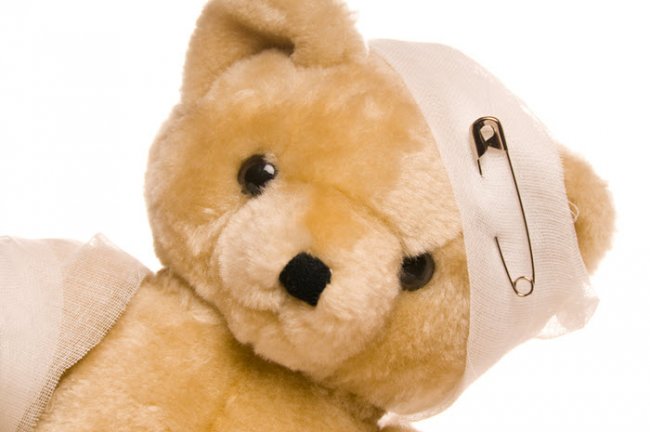

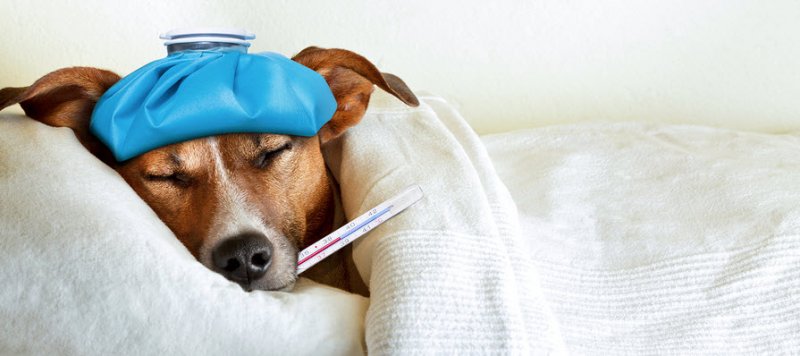






Join The Discussion - 126 comments
Christina
August 29, 2018
Hi,
My Dad had a TBI 25 years ago from a motorcycle accident. He has very bad memory, impulsiveness (does something as it comes to mind without thinking – scatterbrained, can’t plan his day in an orderly streamlined fashion), attention issues. Also, it affected his sense of balance, hand-eye coordination. He has tremors in his left hand. And personality wise, he can’t get really sad or cry anymore, he had anger issues but that went away over the years.
Anyways, do the suggestions in your article apply to someone who had a TBI so long ago?
I’d really like to help him with his memory and cognition. If anything else can be helped that would be a bonus.
David Tomen
August 29, 2018
Christina, is may help your Dad. The human brain has an amazing ability to heal itself given the right tools.
But sometimes, something can get broken that just can’t be fixed. Axons for example which are involved in brain signaling, if they break may not be able to be replaced. It’s like breaking the wires in an electronic device. In this case, it’s the brain that you can’t easily take apart to see what broken and what is untouched.
The only way to find out is to try various nootropic supplements and see what works. It can be a long process and takes patience with someone willing to try.
Phil
May 9, 2018
Hi David,
This is very helpful information. Thank you for including it on your Website. I suffered two strokes when I was a teenager due to a vascular malformation bleed.
I live with some left-side paralysis. Exercise (Cardio, walking, Tai Chi, etc.) and supplements have been very helpful, and I have recovered some movement/vision. However, I suffered some damage to my blood brain barrier and I have developed some neurological food sensitivities including gluten as a result.
I understand that the blood brain barrier is made up of endothelial cells. I noticed in your post you mentioned that Lithium Orotate can provide protection against blood-brain barrier disruption. Does that mean there is also evidence that Lithium can repair a damaged BBB? Are you aware of any other nootropics that would be helpful for repairing the BBB or boosting endothelial progenitor cells? I would be most grateful for any advice.
Cheers,
David Tomen
May 9, 2018
Phil, Lithium Orotate can do a lot of things including protecting the blood-brain barrier from injury. But not long after the injury as far as I can tell.
The following supplements help support and in some cases repair the blood-brain barrier:
• ALCAR
• Alpha-Lipoic Acid
• Alpha GPC and CDP-Choline
• Vitamins B6, B12 and folate
• Berberine
• Nanoparticle-Encapsulated Curcumin
• Omega-3 fish oil
• Ginseng
• Magnesium sulfate
• Resveratrol
I have clinical studies to back this all up but this would take a completely separate post. Each one of these is reviewed here on Nootropics Expert included dosage recommendations. But notice in a couple of instances specific types of that nootropic supplement.
Paul
May 7, 2018
Hi David,
Was just wondering how long after a TBI will these protocols have an effect. I had a pretty good TBI from a car accident back in 1992 (26 tears ago). To this day I have absolutely no memory of the event ( nor do I need to). I have been told that I was conscious at the scene but had to be chased down by the ambulance people and man handled into the ambulance as I was quite aggressive at the time, which is the total opposite of how I normally am. I was put in an induced coma for a few days. The injuries were all frontal lobe injuries, even though I was wearing a seat belt my head hit the steering wheel and bent it forward 3-4 inches. I believe I have mastered most of the effects over the years (or merely figured out how to go around them) and one of the issues I have noted is that using creatine over the course of a few days will cause me to become irritable, it’s not too bad if take half the recommended dose (i.e. 2.5gm per day). Could the irritability be a side effect of the TBI? I know it was definitely a problem for a year or so after the TBI and that was without any creatine whatsoever. 🙂
I realise it’s hard to say but after that amount of time is it possible that there could some residual injury that might be helped by our current knowledge of nootropics.
Thanks again.
David Tomen
May 7, 2018
Paul, my brain recovery is a testament to the power of nootropic supplements to heal the human brain. I realize this isn’t “scientific” proof. But it’s worked for thousands of others as well. One thing we have learned however is it will take more than one nootropic to do the job.
Creatine may be causing irritability because it boosts ATP which is the main energy source for the mitochondria in your cells. So boosting ATP increases brain cell energy which increases neurotransmitter synthesis and transport, and likely increases neuron repair and creation. Boosting certain neurotransmitters like norepinephrine can cause irritability.
Cutting back on your dose of Creatine is a wise move. But I recommend trying other nootropics as well. See the individual reviews for DHA, L-Theanine, Lithium Orotate, Pine Bark Extract, Resveratrol, and the B-Vitamins. You can use all of these nootropics at the recommended dosages without a problem. But always start with the lowest recommended dose and see how you react.
From this post you’ll notice brain injury covers a lot of territory. Fixing axons, increasing neurons, and boosting blood flow will help your brain repair itself. Don’t expect miracles overnight. But you should begin noticing a difference within a week or two of consistent use.
Thomas
January 7, 2018
Hey,
great article, thanks! I know you cited studies for Pycnogenol, but would Grape Seed Extract have a similar effect in your opinion?
David Tomen
January 7, 2018
Thomas, I haven’t done extensive research into Grape Seed Extract. The two provide some similar benefits. But my first impression is that Pycnogenol is likely the better of the two for recovering from TBI.
And then I see a report like this one from Green Med Info and it’s just one more vote for Pycnogenol: http://www.greenmedinfo.com/blog/pycnogenol-boosts-athletic-performance-who-needs-doping-article
Josh
December 31, 2017
I have a family member who sustained a moderate/severe tbi about 5 years ago with most of the damage being to the frontal cortex secondary to a contra coup injury. He still exhibits many symptoms and I know he will never be like he used to but I’m desperate to try supplements to mitigate perseveration, short temperedness, logical thinking difficulties, impulsiveness and speech difficulties. Of all the supplements you mentioned, are there any that are better suited for the chronic tbi as opposed to acute phases?
David Tomen
January 1, 2018
Josh, without knowing exactly what’s happening in the brain down at the molecular level there is no way to tell what will work best in this case.
Repairing the damaged brain is going to take a multi-faceted approach. Contrary to the conditioning we’ve received from Big Pharma and the American medical system, the “one pill” solution is not best. And nearly always will not work. Thousands of years of Ayurvedic and Chinese medicine is a testament to this.
That is why I’ve put together a recommended stack here > https://nootropicsexpert.com/best-nootropics-for-traumatic-brain-injury/#suggested-nootropic-stack-for-tbi-or-concussion-recovery. That stack recommendation is based on a ton of research and clinical studies. But please carefully read the entire article and especially the sections on dosing and drug interactions.
Josh
January 4, 2018
Thanks so much for the reply. Incidentally, how do you feel about the ingredients in onnit’s alpha brain?
David Tomen
January 4, 2018
Josh, I’ll be doing a full review of Alpha Brain sometime early this year. I think the ingredients list is OK. But some of the dosages are far below providing any kind of cognitive benefit. For example, their “Focus Blend” is Alpha GPC, Bacopa and Huperzia Serrata for a total of 240 mg. The lowest recommended dosage for therapeutic benefit for Alpha GPC is at least 400 mg. And all the clinical studies I’ve seen are for Huperzine-A and not Huperzia Serrata. Most of the time manufacturers sneak Huperzia Serrata into the bottle because they don’t want to pay for Huperzine-A.
Bottom-line is there are far better pre-formulated nootropic stacks available in that price range.
Blair
October 23, 2017
Hi David,
Im recovering from post-concussion/prolonged concussion recovery, it’s been almost two years. I’ve also been dealing with recovery from dopamine deficiency before the mTBI (brought on by over stimulation such as video games and occasional pornography habits). I’m looking into trying nootropics to see if I can help the conditions either one at a time, or both at the same time through stacking. What do you think?
For concussion recovery, NAC looks promising. I’ll definitely try that out.
For dopamine issues;
I’ve seen recommendations of Tyrosine and l-tryptophan for dopamine deficiency. Though i haven’t been able to find tryptophan as its my understanding it has been banned? SAM-E looks to be a safe alternative, or can NALT be paired with NAC for results? I don’t have ADD/ADHD but have been lacking motivation due unhealthy dopamine levels.
So my concern is; are these tropics safe to take together? And what is ideal for dopamine deficiency while also balancing serotonin etc etc?
David Tomen
October 23, 2017
Blair, if you are still dealing with concussion recovery, I highly suggest you consider the entire stack recommended for Traumatic Brain Injury here: https://nootropicsexpert.com/best-nootropics-for-traumatic-brain-injury/#suggested-nootropic-stack-for-tbi-or-concussion-recovery. While NAC is an amazing nootropic, I think it will take more than NAC to correct the issues you’re dealing with from concussion.
For dopamine deficiency, it all depends on how severe that deficiency is. For example, in my case I use 800 mg of NALT 3-times per day AND 800 mg of Mucuna Pruriens extract which contains 150 mg L-Dopa. That may be too much for you. Or L-Tyrosine may work better for you than NALT. Each of us is unique so it will require some trial and error on your part until you find the sweet spot.
The FDA attempted to ban L-Tryptophan in 2008 under pressure from the big pharmaceuticals who were afraid of losing market share for their prescription SSRI’s. L-Tryptophan is easily obtained in the USA from most vitamin shops including Amazon. And it’s a great way to raise serotonin levels. It’s good to see you’re concerned about balancing dopamine and serotonin because this is a real issue that many people miss.
Each of the nootropics mentioned in the articles you’ve read on Nootropics Expert have dosage recommendations. Those dosage recommendations are based on real science. But if you’re just starting out, please go with the lowest recommended dose to see how you react. The dosage is very often different than what you see recommended on the supplement label from the manufacturer.
One other thing… read the dosage notes carefully. For example, L-Tryptophan requires magnesium and Vitamin B6 to synthesize serotonin. If you do not include either of those nootropics, L-Tryptophan will not work well if at all.
Blair
October 24, 2017
Thank you so much for your reply David.
I will look into the stack. So far i’ve seen improvement by taking AOR B-Complex Vitamins, as well as occasional Chlorella. Seems to quiet the affected nerves which allows me to be more spontaneous with screen use post concussion. Will continue to take those.
I’ve been doing a bit of Magnesium here and there, but just last night I finally found a more affordable Mag L-threonate in a store near me, and felt very good.
Also been doing Intermittent fasting and Keto as well.
Would L-tyrosine and l-tryptophan be a combination that I could take for a month or so and then only take if I feel I need it occasionally? Don’t want to feel I’m dependent on these.
David Tomen
October 24, 2017
Yes, L-Tyrosine and L-Tryptophan can be taken in combination. And because they are precursors I don’t think it would create a dependency issue. Not physically at least. But the key is how you feel. I’m sure you’re developing a very keen sense of learning to listen to your body with what you’ve been through. Do what your body tells you and you should be fine.
coolrun
October 14, 2017
Thank you David.
Today, I picked up Green Tea Extract (750 mg):
95% Polyphenols (712.5 mg) and 45% EGCG (337.5 mg) < 0.4% Caffeine (3 mg) along with another supplement that has:
Organic Ginko Powder (Leaf) 670 Mg
Organic Blueberry Powder (Fruit) – (Vaccinium Angustifolium) 430 Mg
Organic Asian Ginsing Powder (Root, Rhizome) 50 Mg
Organic Grape Powder (Seed) 50 Mg
Organic Ginger Powder (Rhizome), Organic Papaya Powder (Fruit) 6 Mg
I will be adding them both to his stack. My son is 16 yrs old, 172 lbs.
I thought twice about the Zomig as well and have been hesitant to give to him, but he has taken it 4 or 5 times. The headaches continue to be the focus along with cognitive recovery.
Since the concussion he has been sleeping 13-15 hours a night plus a 2 hour nap during the day. I am assuming the sleep is good for brain recovery and neuron repair putting the stack to work as he sleeps.
Thank you again for all the information, I am thinking trying the SAM-e for the headaches as well.
coolrun
October 13, 2017
Thank you for all the great information. My son is still dealing with bad headaches from a concussion 3 weeks ago and still can not concentrate in school. I found your website and was able to find most of the nootropics and started stacking the following today:
– Omega 3
– Creatine
– Resveratrol
– N-Acetyl-L-Cysteine
– Pycnogenol
– Turmeric
– B Complex
– Alpha GPC
I am using doses as per the recommendation in the article and spreading it out over the day, he is also taking Zomig and Naproxen to try and relieve the headaches. Not sure what more can be done.
Thank you for the information provided in the article and let me know if I am giving too much.
Thank you again,
Tony
David Tomen
October 14, 2017
Tony, let’s start with dosage of each nootropic. It all depends on the age of your son. If he’s under 18 make sure you start with the lowest dose recommended. If he’s even younger (i.e. 10) I’d cut the lowest dose in half. None of these nootropics are considered toxic by any means. But to be safe I always start with the lowest dose and go from there.
I’d also suggest looking deeper into the medications he’s on. Zomig (Zolmitriptan) causes ‘constriction’ of the blood vessels. I’m not sure how constricting blood flow in a brain that’s trying to recover from TBI can be a good thing. An injured brain needs the best cerebral circulation possible for repair.
I realize Zomig was prescribed for treating headaches. You may want to consider Magnesium, CoQ10, SAM-e and/or Tryptophan for headache relief.
https://nootropicsexpert.com/coenzyme-q10/
https://nootropicsexpert.com/magnesium/
https://nootropicsexpert.com/tryptophan/
https://nootropicsexpert.com/sam-e/
And Naproxen works by inhibiting both the COX-1 and COX-2 enzymes which makes it an anti-inflammatory. You should realize that the DHA in Omega-3’s is also a COX-2 inhibitor. As is NAC a COX-2 inhibitor. Turmeric is also a potent antioxidant which provides relief from inflammation.
I am NOT saying to discontinue the doctor prescribed meds. I am not a doctor. Don’t even play one on TV. But have learned the hard way to question every drug any doctor has ever prescribed by learning everything I could about how it works. The vast majority of doctors have no idea. You’re definitely on the right track here with TBI. It just takes awhile for our brains to repair themselves.